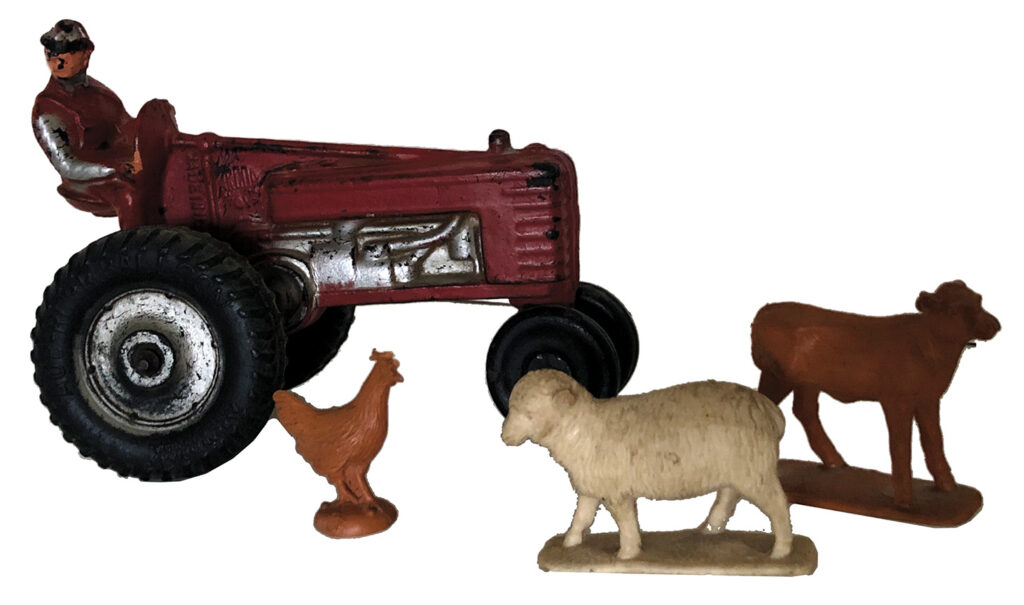
Dorri Partain
Contributor
The development of children’s toys followed the development of new vehicles. Once the gas-powered farm tractor was invented in 1892, smaller versions that could be powered by children’s hands, and imaginations, were manufactured in a variety of materials.
Located in Auburn, In., the Auburn Rubber Company, also later known as ARCOR, began rubber tire production in 1913 as the Double Fabric Tire Company. By 1935, the company switched from rubber tires to other rubber products, namely rubber sheets for shoe soles and a line of toys.
During World War II, the company switched to war-time supplies, mainly soles for combat boots and linings for jerry-cans. Following the war, the company returned production to a full line of toys, including this early 1950’s tractor.
Molded in black rubber, then colored red, blue or green, a silver coating highlighted engine parts and the farmer’s shirt; in the numerous styles of cars, trucks, trains and planes the company produced, the silver coating highlighted windshields, bumpers, and other details.
Designed as a 1/32 scale model of a farm tractor, the tires read “AUB-RUBR BALLOON,” which may have been the type of tire the company once manufactured, along with “Auburn, Indiana, Made in USA.”
Marketed as “Safe Play” toys, these rubber vehicles, unlike metal toys, were “noiseless” as well as rust-proof, and could be molded to show more details. To accompany the tractor, sets of farm animals were sold separately.
In 1959, the toy line’s production moved from Auburn to Deming, N.M., as part of a job creation program and rubber was slowly phased out for plastic before the facility shuttered in 1969.


















